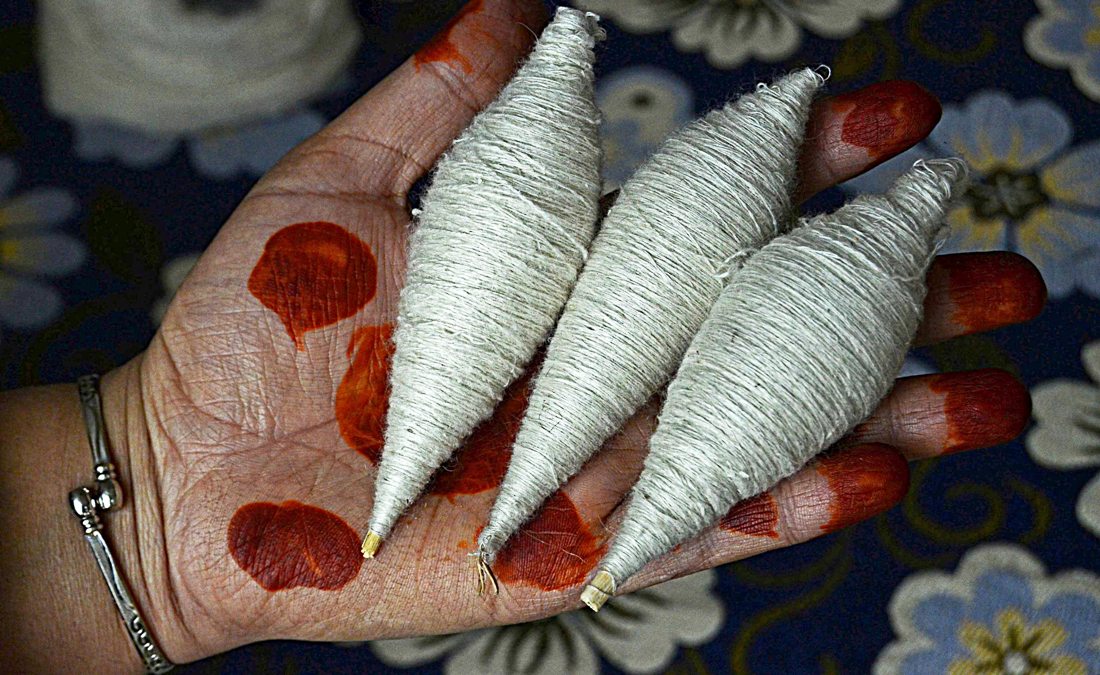Ilhak Tantray
SRINAGAR: In the Palhallan area of Baramulla district, the village of Gopalun stands quietly, adorned with willow trees and bordered by a meandering stream, offering respite from the urban hustle just an hour’s drive away on NH-44. Home to 25 families, Gopalun exudes tranquillity, harmonizing natural beauty with age-old customs.

Despite the commendable strides made by local artists in reviving the fading art of pashmina over the past decade, their endeavours have largely gone unnoticed by authorities.
Saqib, a 17-year-old artisan disheartened by the lack of recognition, contemplates abandoning his craft after completing his current masterpiece: a pashmina shawl handed down to him by his father. He questions the pursuit when appreciation seems elusive.
Within this humble village, pashmina weavers confront myriad challenges, including poverty and governmental neglect. Yet, their unwavering commitment stems from a deep connection to their ancestral roots.
Kulsuma, 29, a lifelong practitioner of this art, yearns for official acknowledgement. She wonders, “Why pass on this tradition to our children if it brings no tangible benefit? The Weaving Crafts Department has yet to reach out.”
At 39, Shamim Ahmad reflects on the value of his acquired skill, nurtured since youth. However, the lament echoes: what recourse is there when the artisan’s voice goes unheard, and their labour is undersold to middlemen?
Former fishers and sand miners from coastal villages have returned to sand mining, driven primarily by financial imperatives. The traditional craft, it seems, falls short of meeting their economic needs.
Muzaffar, toiling alongside his two sons, notices a glaring absence—the artisan ID cards essential for accessing marketing, finance, and insurance schemes for looms and handicrafts. His grievance is straightforward: “Now we await the return of the broker, rendering our work futile in the interim.”
While the Jammu and Kashmir Handicrafts Department extends various incentives to support struggling artisans, the masters of Gopalun remain excluded. Momin, a voice among them, questions the efficacy of the touted plan, asserting, “Craftsmen toil daily; what good is this plan they boast about? I knew how to fish, but my father compelled me into this field.”
Artisans in Gopalun grapple with meagre wages, toiling daily until their plight catches someone’s attention. The persistent hardships chip away at their dedication, eroding morale.
Saqib, expressing the harsh reality, emphasizes, “It’s facile to advocate for art promotion daily, but sit here for a day and feel the strain on your eyes and spine.” The young artist’s lament resonates with the physical toll of their labour.















